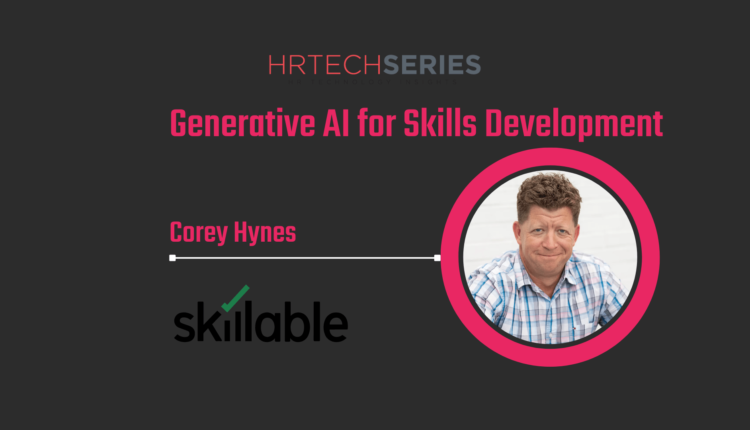In the last few months, conversational AI powered by large language models (LLMs) has taken the world by storm and is already a disruptive force across many industries. On the one hand, AI can act as a force multiplier, reducing the information an employee must acquire and retain. On the other hand, it provides tools that reduce the work required for educators to instill new skills and transforms how we think about validating skills.
“Proof of Work” Is Becoming More Critical Than “Proof of Knowledge” in Skills Validation
Skills validation is generally based on frameworks such as Bloom’s Taxonomy. These models are used heavily in learning applications to design programs and assessments that move learners beyond knowledge into analysis and comprehension, using assessment questions such as “multiple choice” or “choose all that apply.” Candidates read, comprehend, interpret, and analyze information and then decide on a course of action. This “proof of knowledge” does not require employees to demonstrate they have learned the skill. We must move beyond this mindset and expect candidates to demonstrate skill by executing the decision or performing the task – “proof of work.”
As AI evolves, using proof of knowledge as a reliable form of skills assessment is becoming less desirable. There are many recent examples of AI passing law, business and medical exams, demonstrating what can be accomplished with access to knowledge. However, a skills validation program where employees perform tasks can provide verifiable evidence – proof of work – that an individual possesses the desired skill(s). Businesses can tap into high-touch, hands-on labs to target and develop skill deficiencies and validate their employees’ learnings.
AI Empowers Learning Professionals to Create Better Content Faster
One of generative AI’s most significant uses is its ability to give you a first draft of virtually anything in any tone, format, or structure. For authors crafting learning content, this is particularly useful. Traditionally, creating learning content is incredibly time-consuming, requiring instructors to guess what their learners need and then curate and format large quantities of text into documents, modules or videos.
By leaning into generative AI, content authors can generate a usable learning document first draft, complete with instructional text, step-by-step procedures and even assessment questions, cutting significant time and cost from the content development process and reducing the skills required for a content author to get started. More people can build better content in less time.
AI-powered tools such as ChatGPT can give you workable, mostly complete, starter content that can be easily modified. Furthermore, if you are creative in your interaction with AI, what it produces can be perfectly tailored to your environment, incorporating names, style, tone and structure.
Top HR Tech News: Mask Social Security Number Easily With Updates to 2023 EzPaycheck Payroll Software
Elevate Instructors From the Sage on the Stage to Coaches
This is where we will see conversational AI’s biggest direct impacts on skills development and validation. In the past, many platforms have built or implemented some form of mentoring or coaching through a mix of “chat” tools and synchronous and asynchronous communication with experts. The learner asks the instructor to expand, teach or rephrase a concept so they understand it. Everyone learns differently; sometimes, something as simple as restating a point in a different context is enough to create that “aha” moment. These solutions are expensive and complex because they rely on human Instructors to make them work.
Generative AI, when given access to your learning materials as the source of truth, can make every learning interaction highly personalized, efficient and effective at a far greater scale than ever before. By deeply integrating AI into the learner experience, you can bring the impact of a 1:1 personalized instructor to every interaction – an instructor who knows the user’s learning and communication styles, history and goals and even if they prefer examples of analogies when learning new skills.
Embrace AI in Learning for Efficiency
Learning professionals should not fear AI or reject it. Instead, they should be working toward a future where AI is a fully integrated and transparent part of the learning experience.
Imagine interacting with any instruction, goal or skill in a learning path and being taught by AI in real time. Imagine being able to engage with AI with phrases like “I still don’t understand,” “Show me how” or “Explain this another way” to explore further or summarize the topic.
What if the experience in the module is akin to sitting with a tutor who watches you do things, gives you tips when you struggle and explains things you don’t understand? Imagine if that experience was situationally-aware, knew what kind of skill you were learning, on what topic and what skills you have already mastered.
What if we could look at topic patterns over time that people asked about and dynamically change the module’s content to provide personalized AI-generated content that focuses on your weak areas while bypassing your strong ones?
With a few simple evolutionary steps in thinking, we can bring conversational AI to the forefront of the learner experience. This is where the excitement lies.
Conversational AI allows us to produce 10 times the content in half the time, either by the author or in real time for the learner, and then enables us to choose which content to display and when, in real-time, based on the user’s behavior and the skill they are learning.
The result? Modules that begin with a simple framework but dynamically evolve so that every learning experience is unique to the learner and their role. It is a 100% dynamic, 100% personalized, 100% interactive, 100% validated skilling experience.

